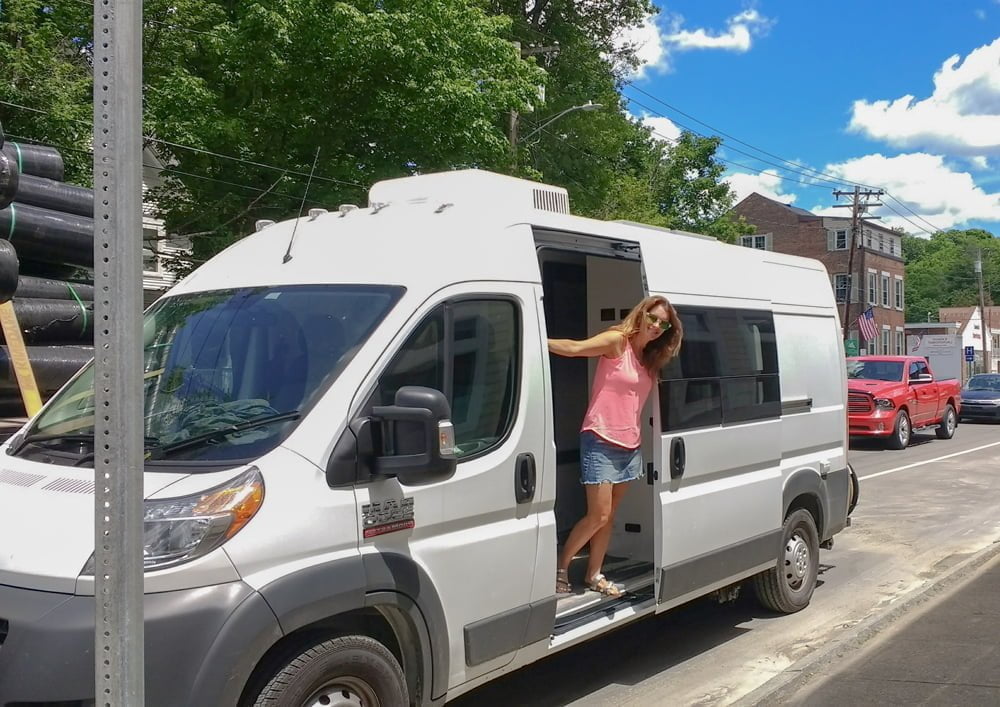Amps vs Amp-hours. Current vs capacity. A classic rivalry!
No. Wait. How can we pit these two important parameters against each other when they’re complementary? This blog revisits some important subtopics on sizing your electrical system, with a focus on how much current (Amperes, or Amps) and storage capacity (Amp-hours, or Ah) your system may need.
Why is there a 250 Amp fuse on my 300 Ah battery? You’re selling a 460 Ah battery, so do I need more than one battery in my system? What’s with all the 4/0 cables, can’t I use smaller ones? These are some common questions we receive about our example wiring diagrams.
Let’s try to clarify current and storage capacity using a few examples with our old friend the free example load calculation Google Sheet.
Current
Current is the measure of the flow of electricity through a conductor. At a high level, current flowing from your batteries provides the power (which is current times the battery voltage) needed by your loads to operate. There are a few important considerations in determining your system’s current needs (or is that need for current? bad pun).
First, what is the maximum current needed by your loads at any given time? This number is likely much higher than the average load consumption that you analyzed. Looking at Example 1 in the load calculation sheet, let’s consider that you come back to your van at the end of the day after a nice, long hike. You turn on the air conditioner (at max for a while to cool things down), turn on some lights, notice that your refrigerator is running to keep things cold, and fill a pot with water to start boiling on the induction cooktop. Did you look at your battery monitor and realize that you’re using around 250 Amps of current (roughly 3000 Watts on your 12 Volt system) for a little while? Perhaps you made a cup of coffee or threw something in the microwave too, and you peaked at nearly 400 Amps of current! This usage is actually typical, and we should plan for it. Because our vans are our homes, no one wants the power to go out while enjoying our vans.
Second, the maximum load current above leads to another consideration of your system’s need for current: the battery specifications. As an example looking at our SOK 314 Ah batteries, the manufacturer recommends a continuous current of 150 Amps charging and 200 Amps discharging. Exceeding these continuous values can degrade your batteries’ long term performance. Given the significant investment in your batteries, this is one of the reasons we suggest multiple batteries in parallel when designing a system. Each additional battery reduces the discharging demand from the other batteries, maximizing short-term and long-term battery performance. Stated differently, batteries in parallel increases the current capability of your system. In this example with SOK 314 Ah batteries, two batteries safely supports 400 Amps continuous discharging as compared to 200 Amps from a single battery.
As a result of considering current, we typically recommend three (but at least two) batteries in the scenario above.
Capacity
Capacity is a little more straightforward to consider, and capacity is well-covered in our sizing your electrical system blog. Capacity is how long can your system sustain your current consumption (Amps multiplied by time) and that’s typically best to consider using the average consumption calculations laid out in our free example load calculation Google Sheet. Capacity is additive, so each battery adds to the total available capacity in your system.
Again returning to Example 1, now let’s consider that you plan to boondock for four nights. No shore power. No driving. While solar is great when you have it, you decide how certain you are to predict sunny skies during the day, and that assumes that you don’t park in the shade anyways. (Spoiler alert, on my trips it rains anyhow!) If you maintain the average consumption of around 250 Ah a day for four nights, you’ll want more than four times that capacity in your battery bank. Don’t forget another important battery specification, the manufacturer’s recommended depth of discharge, which is typically 80% to maintain good performance over the life of your battery.
In our capacity example, we would recommend at least four SOK 314 Ah batteries (or at least three Epoch 460 Ah batteries) to meet your boondocking goals.
Wrap-up
Also necessary in your considerations is design margin, or some additional comfort zone if your usage predictions are off. Maybe you use the van differently than you projected, or what if you decide to add another gadget to better enjoy your van? You don’t want to plan your system right at the edge of manufacturer specifications. On top of that, there’s Physics to deal with…current increases as battery voltage decreases (which is during discharging), some loads have inrush or starting currents even higher than typical consumption, and efficiency decreases with increased heat. Design margin, as well manufacturer recommendations, are additional reasons that multiple, paralleled batteries are best suited for most van applications to address both current and capacity.
Let’s wrap up by revisiting the three common questions above with our Amps vs Amp-hours knowledge.
Why is there a 250 Amp fuse on my 300 Ah battery?
We’re back to Amps vs Amp-hours confusion, aren’t we? Your maximum load calculations, spread across multiple parallel batteries, help determine the expected maximum current from each battery. Fuses are specified to protect the cables, and the cables are specified for the maximum expected current plus margin. It’s perfectly normal for a 300 Ah battery (for example, with specifications for 200 A continuous and 400 A peak current discharging) to be fused at 250 A.
You’re selling a 460 Ah battery, so do I need more than one battery in my system?
Maybe you’re building out a minimalist van, and your load calculations suggest some combination of low current or low duration meets your needs. Or maybe you’re always plugged in to shore power. In those cases, yes one battery may be perfect. For many of our customers, off-grid capabilities combined with daily van needs like cooking or cooling will lead to different conclusions. That’s why our example diagrams and recommendations typically reflect systems with 2-4 batteries in parallel.
What’s with all the 4/0 cables, can’t I use smaller ones?
This topic is related to current and fuse selection, but it comes up often enough to touch on in this blog. As you can see on this handy wire gauge calculator, maximum current is only one of the factors in properly designing your cables. You can use smaller diameter cables, if your fusing and current consumption is reduced, among other things. One way to reduce large diameter cables is using multiple batteries in parallel such that each battery contributes less current (through appropriately reduced fuse sizes). Another way to reduce cabling size is to increase system voltage (to 48 Volt or 24 Volt). Quadrupling the voltage reduces current by a factor of four, and the lower current reduces cable losses…because Physics. Reducing current allows significantly smaller cables to be specified (again, with appropriately reduced fuse sizes).
Current? Or capacity? With modern advances in battery technology, vanlifers are the winners on both counts!

